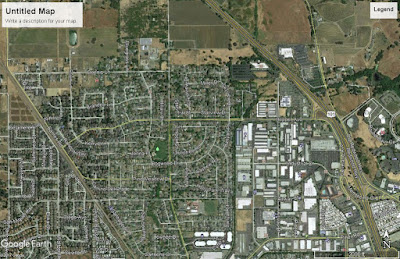Via The Mountaineers Fred Beckey has left us (remembering-mountaineer-fred-beckey). I never met Fred Beckey personally, and I never categorized myself as a climber. But regardless I felt I had met Beckey. During another era I worked in the North Cascades and the three geologists I worked with had dogged eared copies of Becky's guide. At that time I viewed him as a guide to personal terror. He had ventured into extremely difficult terrain prior to our geology ventures and his guide books provided the descriptions on how to get to places that tested my nerves and fortitude.
A few years later I utilized his guide books to navigate into areas not for peak ascents but to explore the geology of a specific area in the North Cascades Range. I did take some pride in navigating an ascent approach within my own field area that even Becky described as an unpleasant route that he backed out of but still provided as an approach route option. The route was not some great climbing route, but was an absolutely miserable 5,000-foot ascent through thick"dog hair" Douglas fir to the base of a glacier where the alpine ascents began. My first attempt of the route ended in miserable retreat. The second time was completed successfully as a solo venture that include my longest stint of no other human interactions after reaching the edge of a the high glacial area below a string jagged Becky first ascent peaks.
While I have looked up to many of his first ascent peaks and routes, I was more impressed with the access routes he pioneered to even get near some of the North Cascade peaks. The challenge of the North Cascade climbing he pioneered was a mix of technical combined with very physically demanding approach routes into and through the deep valleys within the range.
Getting to the many of the North Cascades peaks Becky climbed takes passion and a physical fortitude few people possess. But pioneering these routes also took judgement - very good judgement. That judgment explains more than anything else how Becky survived so many of his adventures and led such a long life. He had the ability to read a landscape without guidance and I am struck by how many of his ventures took place through times when he was young and may not have known better and when he was experienced enough that he could have been fooled by arrogance.
A few years later I utilized his guide books to navigate into areas not for peak ascents but to explore the geology of a specific area in the North Cascades Range. I did take some pride in navigating an ascent approach within my own field area that even Becky described as an unpleasant route that he backed out of but still provided as an approach route option. The route was not some great climbing route, but was an absolutely miserable 5,000-foot ascent through thick"dog hair" Douglas fir to the base of a glacier where the alpine ascents began. My first attempt of the route ended in miserable retreat. The second time was completed successfully as a solo venture that include my longest stint of no other human interactions after reaching the edge of a the high glacial area below a string jagged Becky first ascent peaks.
While I have looked up to many of his first ascent peaks and routes, I was more impressed with the access routes he pioneered to even get near some of the North Cascade peaks. The challenge of the North Cascade climbing he pioneered was a mix of technical combined with very physically demanding approach routes into and through the deep valleys within the range.
Getting to the many of the North Cascades peaks Becky climbed takes passion and a physical fortitude few people possess. But pioneering these routes also took judgement - very good judgement. That judgment explains more than anything else how Becky survived so many of his adventures and led such a long life. He had the ability to read a landscape without guidance and I am struck by how many of his ventures took place through times when he was young and may not have known better and when he was experienced enough that he could have been fooled by arrogance.

























